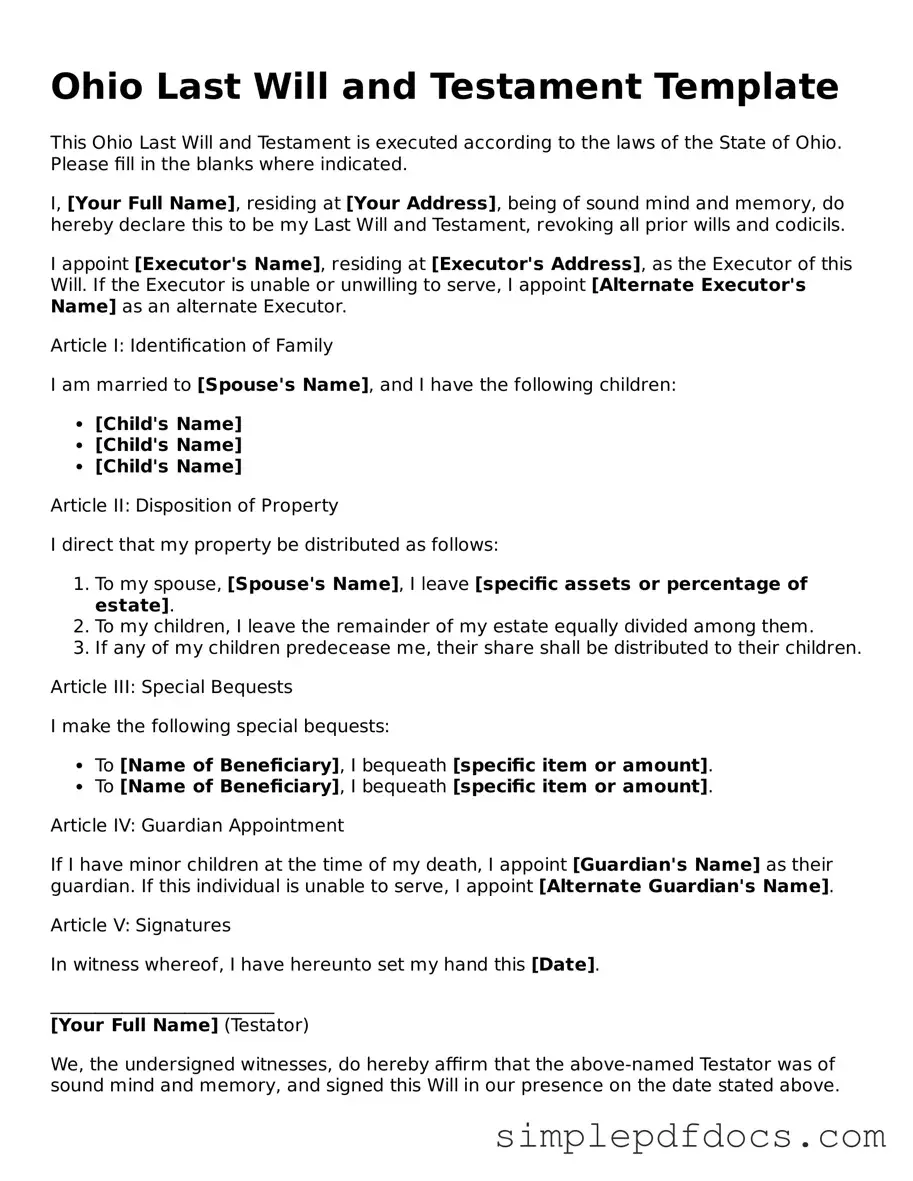Legal Last Will and Testament Document for the State of Ohio
A Last Will and Testament is a legal document that outlines an individual's wishes regarding the distribution of their assets after their death. In Ohio, this form serves as a crucial tool for ensuring that one's estate is managed according to personal preferences. Understanding the nuances of this document can empower individuals to make informed decisions about their legacy.
Get Document Here
